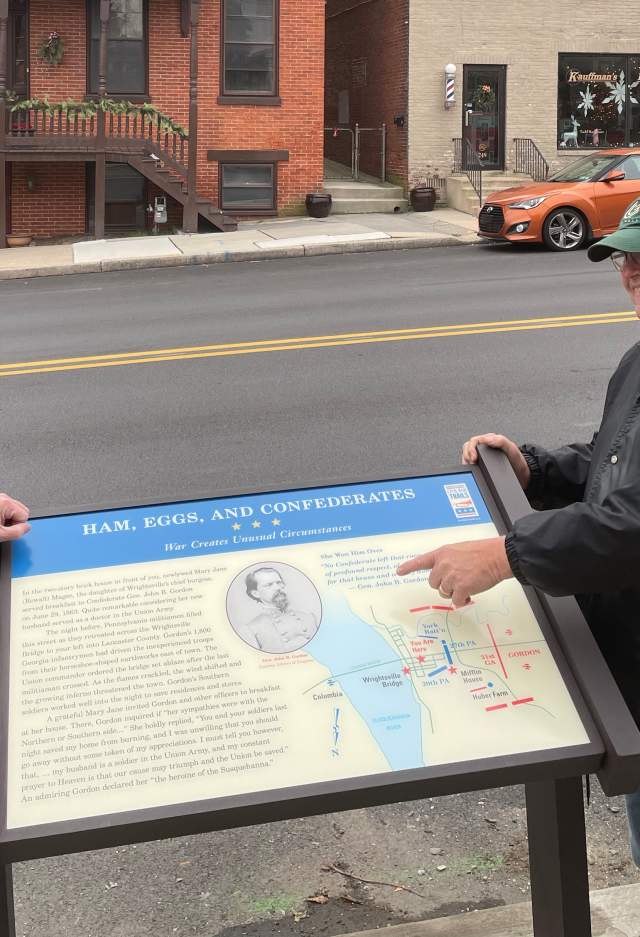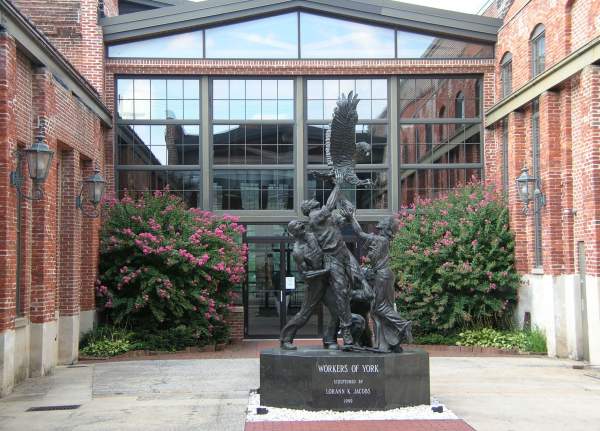Civil War History in York County, PA
The Civil War left an indelible mark on the United States, and York County, Pennsylvania, was no exception. Situated in the heart of Pennsylvania, York County played a significant role in the conflict, experiencing the tumultuous upheavals and enduring the profound changes that swept the nation during those tumultuous years.
As tensions between the North and South escalated, York County found itself at a crossroads. Located between the Confederate stronghold of Virginia and the Union capital of Washington, D.C., the county became a crucial thoroughfare for troops, supplies, and communication. Its position along major transportation routes, including the vital Northern Central Railway in New Freedom, made it a target for both Confederate and Union forces.
In June 1863, York County was thrust into the forefront of the war when Confederate forces under the command of General Jubal Early invaded Pennsylvania during the Gettysburg Campaign. As Early's troops advanced north, they seized control of York, making it the largest Northern town to fall into Confederate hands during the war. After this happened, the county faced a period of occupation marked by requisitions, detentions, and ransom demands from Confederate forces.
The burning of the bridge spanning the Susquehanna River in Wrightsville, York County, stands out as a poignant chapter in the county's Civil War narrative. With Union troops unable to defend the bridges crossing the river, the decision was made to prevent Confederate access by destroying them. On June 28, 1863, as Confederate forces approached Wrightsville, most people evacuated the town, leaving behind only a small group to delay the Confederates. As Confederate forces reached Wrightsville, they were met with great resistance from the defenders. In a desperate bid to impede the Confederate advance, Union troops set fire to the wooden bridge spanning the Susquehanna River, engulfing it in flames and rendering it impassable.
This was a symbolic gesture of defiance, demonstrating the resolve of Union forces and local residents to resist Confederate incursions into Pennsylvania. Although the town suffered extensive damage in the ordeal, the destruction of the bridge effectively halted the Confederate advance, forcing General Jubal Early to seek alternative river crossings further upstream. The stone piers of the original bridge still stand in the river today, a reminder of one town's sacrifice to save a nation.
Despite the hardships endured by its citizens, York County emerged from the Civil War with a renewed sense of resilience and determination. In the aftermath, the county played a pivotal role in the process of reconstruction, rebuilding its shattered communities and reconciling its divided loyalties. York County's enduring spirit prevailed, paving the way for a brighter future.
Learn More About the Civil War in York County, PA
Today, the legacy of the Civil War lives on in York County, as evidenced by its rich historical heritage and vibrant cultural landscape. Visitors can explore a wealth of historic sites and landmarks that offer insight into the county's wartime experiences, from the hallowed battlefields of Gettysburg to the preserved buildings and artifacts that tell the story of its civilian and military inhabitants. Through education and commemoration, York County continues to honor the sacrifices of those who fought and died to preserve the Union, ensuring that their memory will never be forgotten.
York City
Experience the story of William Goodridge, a prominent African American businessman who used his means to help others to freedom as a stationmaster along the Underground Railroad. Goodridge's home still stands today and has been converted into a museum dedicated to his legacy.
New Freedom
Ride civil war-era steam engines that still roar with life on the same rails that President Lincoln traveled when he gave the Gettysburg Address, and shortly thereafter when his funeral procession made its way through Pennsylvania.
Hanover
Learn how Brig. General George Custer, now infamous for his final Battle at the Little Bighorn, was a pivotal figure during the Civil War. Historians have said that it was his defeat of the Confederates during the Battle of Hanover that paved the way to a Union victory in Gettysburg.
Uncover More History on the
Civil War Trails in York County
Civil War Trails
The Civil War Trails is a network of historical markers and trails that guide visitors through key sites associated with the…
Must See
Cafes, Tea & Coffee Houses
Need a caffeine fix? Interested in a soothing herbal blend? Our tea and coffee houses…
History Comes Alive
Learn about York County's vast contributions to the progress of agriculture and…






